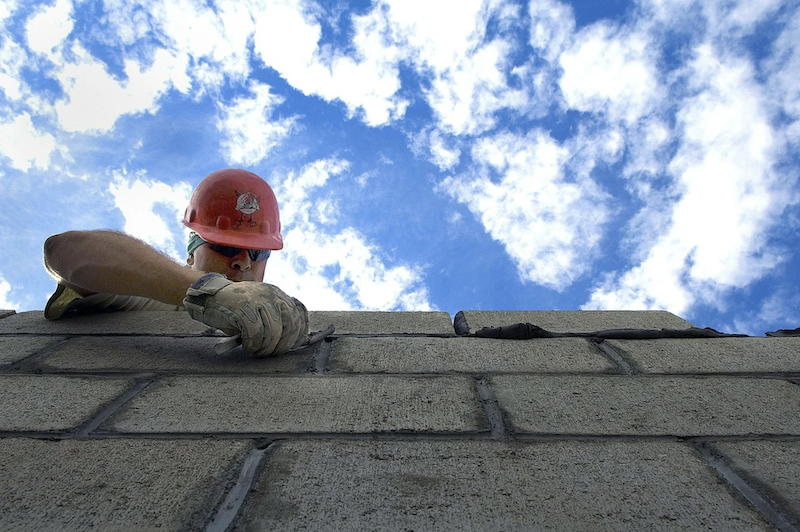Construction employment in December remained below pre-pandemic levels in two-thirds of the states even though 37 states and the District of Columbia added construction jobs from November to December, according to an analysis by the Associated General Contractors of America of government employment data released today. Association officials said the new data highlights how broadly the industry has been impacted by the pandemic and underscores the need for additional coronavirus recovery measures.
“While most states recorded construction employment gains in December, the pickup is likely to be temporary for many,” said Ken Simonson, the association’s chief economist. “Participants in our association’s recent Hiring and Business Outlook Survey expect the dollar volume of most project types available to bid on to decline in 2021.”
The survey, which included responses from more than 1,300 contractors in every state and D.C., asked about prospects for 16 categories of projects. On balance, respondents expect growth only for non-hospital health care, such as clinics, testing and screening facilities, and medical laboratories; warehouses; and water and sewer projects.
Seasonally adjusted construction employment in December was lower than in February—the last month before the pandemic forced many contractors to suspend work—in 34 states and was unchanged in Kansas, Simonson noted. Texas lost the most construction jobs over the 10-month period (-35,600 jobs or -4.5%), followed by New York (-30,900 jobs, -7.5%), Florida (-17,500 jobs, -3.0%) and New Jersey (-16,700 jobs, -10.0%). Vermont experienced the largest percentage loss (-23.1%, -3,400 jobs), followed by New Jersey.
Only 15 states and the District of Columbia added construction jobs from February to December. Virginia added the most jobs (10,800, 5.3%), followed by Utah (7,000 jobs, 6.1%) and Alabama (6,100 jobs, 6.4%). Alabama added the highest percentage, followed by Utah and South Dakota (5.7%, 1,400 jobs).
Construction employment decreased from November to December in 11 states and D.C., increased in 37 states and was unchanged in North Carolina and Rhode Island. Arizona had the largest loss of construction jobs for the month (-4,100 jobs or -2.3%), followed by Louisiana (-2,000 jobs, -1.5%). Delaware had the largest percentage decline (3.2%, -700 jobs), followed by Arizona, Alaska (-1.9%, -300 jobs), and Louisiana.
California added the most construction jobs over the month (31,600 jobs, 3.7%), followed by New York (8,500, 2.3%) and Illinois (8,300 jobs, 3.8%). New Hampshire had the largest percentage gain for the month (4.0%, 1,100 jobs), followed by Illinois and New Mexico (3.8%, 1,800 jobs).
Association officials said demand for construction will continue to suffer until the coronavirus is under control and urged federal officials to enact measures to help stem additional job losses in the sector. These new measures should include new federal investments in infrastructure, backfilling depleted state and local construction budgets and moving quickly to forgive Paycheck Protection Program loans issued last year.
“Contractors are eager to save as many jobs as possible during the next several months on the expectation demand will return once the coronavirus comes under control,” said Stephen E. Sandherr, the association’s chief executive officer. “Washington officials can help save countless construction careers by acting now to stabilize demand.
View state employment February-December data and rankings; and November-December rankings.
Related Stories
Market Data | Jan 18, 2017
Architecture Billings Index ends year on positive note
Architecture firms close 2016 with the strongest performance of the year.
Market Data | Jan 12, 2017
73% of construction firms plan to expand their payrolls in 2017
However, many firms remain worried about the availability of qualified workers.
Market Data | Jan 9, 2017
Trump market impact prompts surge in optimism for U.S. engineering firm leaders
The boost in firm leader optimism extends across almost the entire engineering marketplace.
Market Data | Jan 5, 2017
Nonresidential spending thrives in strong November spending report
Many construction firms have reported that they remain busy but have become concerned that work could dry up in certain markets in 2017 or 2018, says Anirban Basu, ABC Chief Economist.
Market Data | Dec 21, 2016
Architecture Billings Index up slightly in November
New design contracts also return to positive levels, signifying future growth in construction activity.
Market Data | Dec 21, 2016
Will housing adjust to an aging population?
New Joint Center report projects 66% increase in senior heads of households by 2035.
Market Data | Dec 13, 2016
ABC predicts modest growth for 2017 nonresidential construction sector; warns of vulnerability for contractor
“The U.S. economy continues to expand amid a weak global economy and, despite risks to the construction industry, nonresidential spending should expand 3.5 percent in 2017,” says ABC Chief Economist Anirban Basu.
Market Data | Dec 2, 2016
Nonresidential construction spending gains momentum
Nonresidential spending is now 2.6 percent higher than at the same time one year ago.
Market Data | Nov 30, 2016
Marcum Commercial Construction Index reports industry outlook has shifted; more change expected
Overall nonresidential construction spending in September totaled $690.5 billion, down a slight 0.7 percent from a year earlier.
Industry Research | Nov 30, 2016
Multifamily millennials: Here is what millennial renters want in 2017
It’s all about technology and convenience when it comes to the things millennial renters value most in a multifamily facility.

















